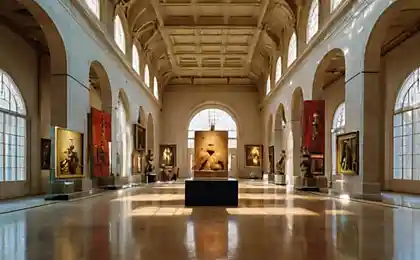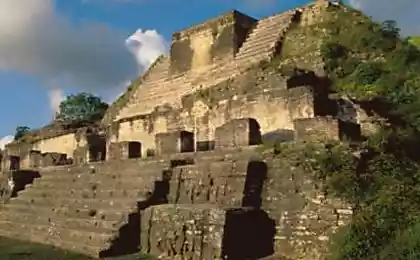1418
Technology Parthenon
From Wikipedia:
"The Parthenon (ancient Greek. Παρθενών - maiden; clean) - a monument of ancient architecture, ancient Greek temple, located on the Athenian Acropolis, the main temple in ancient Athens, dedicated to the patroness of the city and the whole of Attica, Athena-Virgin (Ἀθηνᾶ Παρθένος). Built in the years 447-438 BC. e. Project architect Callicrates Iktinos and decorated in the years 438-431 BC. e. under the direction of Phidias in the reign of Pericles.
The temple was built entirely of Pentelic marble, produced nearby. During production it is white in color, but under the influence of sunlight yellow. The north side of the building is exposed to less radiation - and because there was a stone-gray ashy hue, while the southern blocks give a golden-yellow color. Tile and stylobate are also made of this marble. Columns of stacked drums, fastened together with wooden plugs and Kingpins.
Masonry was carried out without any mortar or cement, that is was dry. Blocks were right quadra. They carefully grind the edges and adjust the size of each other. The inner part remained roughly treated, which saves time and reduces labor costs. At the bottom lay orthostatic - big quadra, which already has a much smaller stones that make up the regular masonry. Horizontal units are connected by iron scrapie, inserted in the slots and filled with lead. Vertical communication was performed using iron rods.
Overlaps were wooden. Ceilings inside were obviously kassetirovany because it is believed that the exterior - stone - mimic internal ».
After seeing the Parthenon, was wondering how it was built and what technologies were used. Close to the stone guards are not allowed, but some interesting things have been photographed.
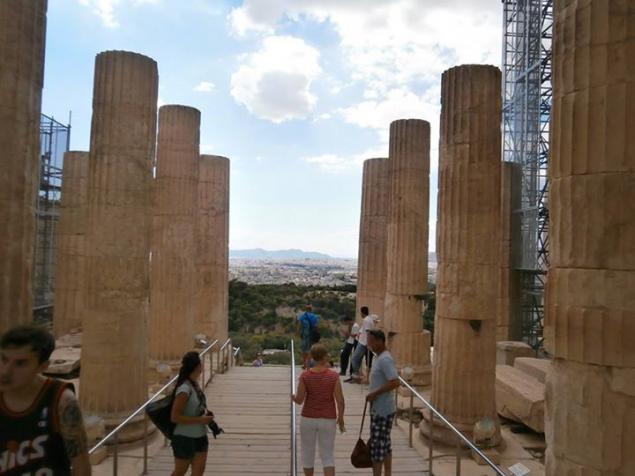
Columns are built of massive blocks.
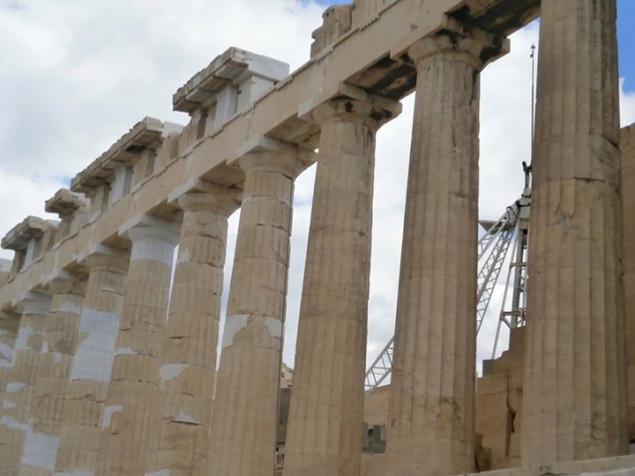
Surprising accuracy of the vertical lines and the sample, the gap between the blocks.
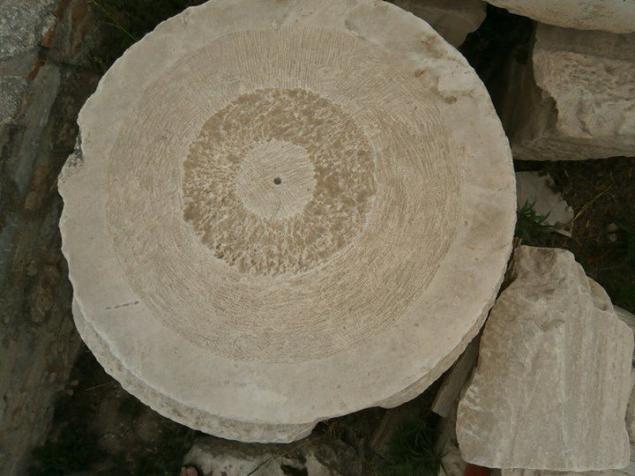
Column block. Absolutely smooth polished surface on which to make a rough chisel notches. The hole in the center of the unit! Why? If cement blocks together and prevents shifting, the rod must be of good alloy steel. Wikipedia is written about wooden plugs and shkvortni:-)

Amazing stone, the ancient "Lego". Marble round pins protrude 5 cm. What is required Rabo hours to create such a structure, and most importantly why. This can be done if it is not technological problems, such as casting or CNC.
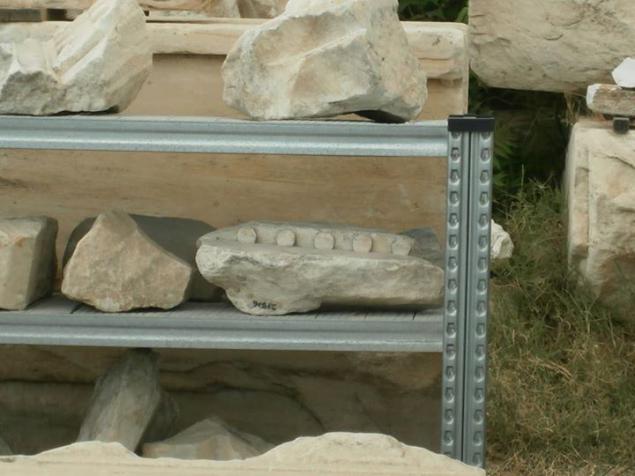
More «Lego».
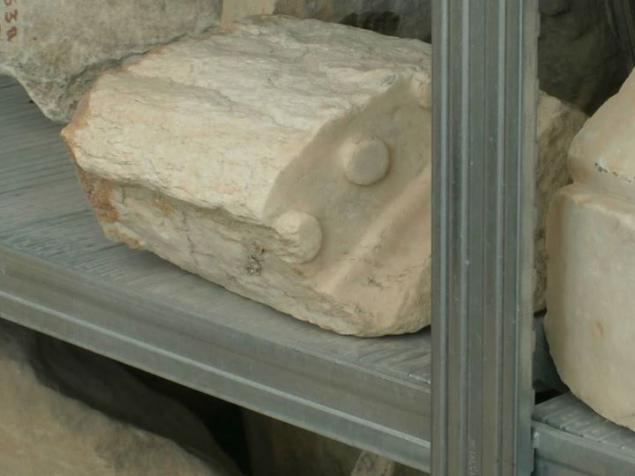
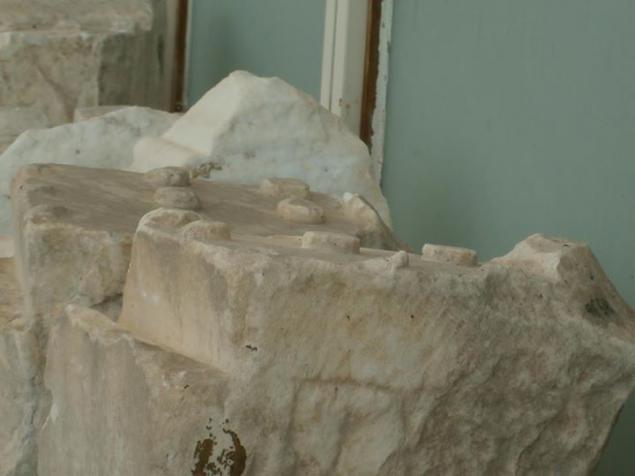
Apparently builders use these slots is not something unique.

Select unturned 4-5 sq. meters of the surface for a few slots easily. I believe that is done manually slaves:-)
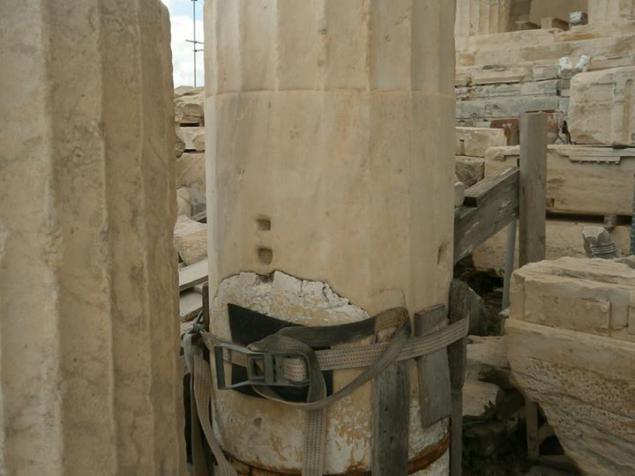
Square grooves on the column and the cutouts on the block on the right.
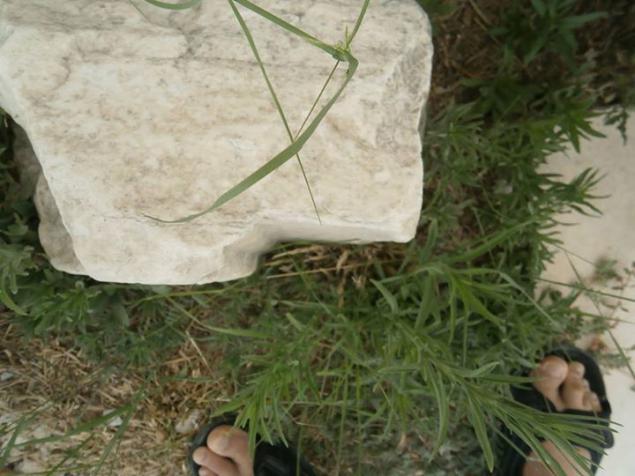
The notch in the foundation blocks. Why so complicated?
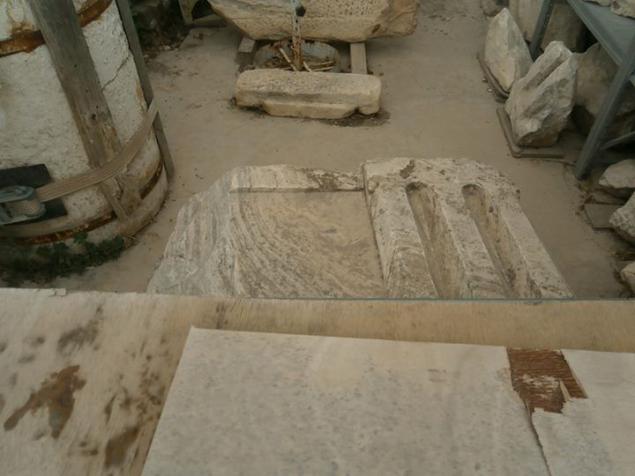
Slaves had a lot of free time?

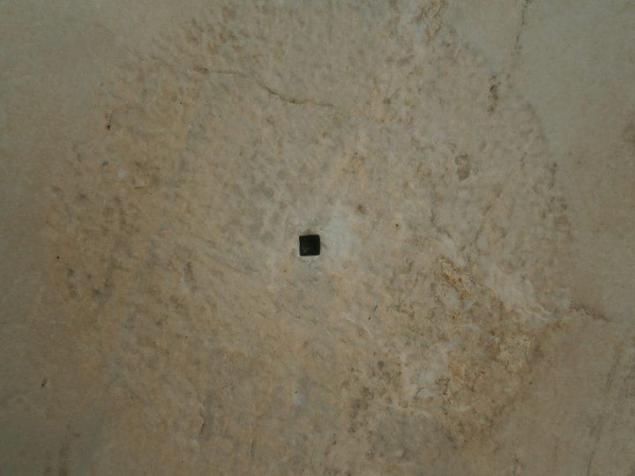
Another element of the column with the hole exactly in the center.
Wow! Square hole. In ancient marble lathe-machining lathe clamping the workpiece? Positioning units relative to one another is not necessary, if only the lower block with a square hole to insert the spike square cross section at the bottom and round at the top and set top box with a circular hole. Another question, "Why" and "How to».
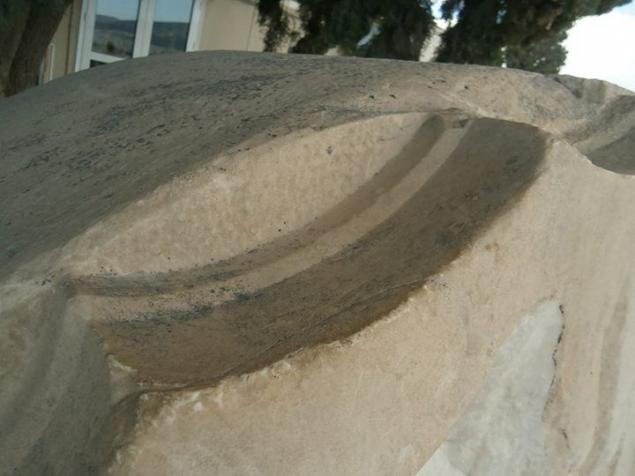
These are the sample on the column allegedly made by hand.
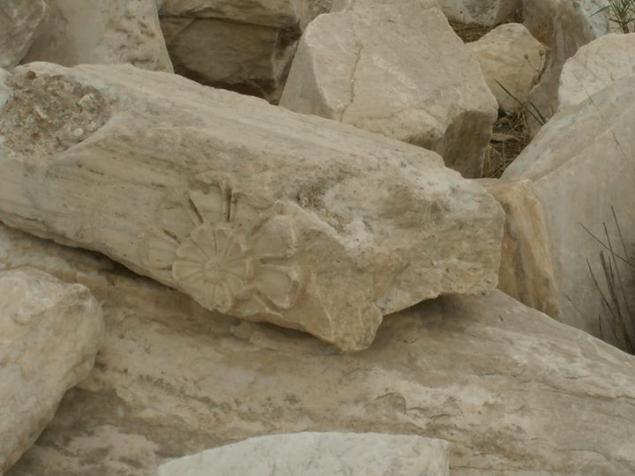
Decorative elements. If cast in stone in the form, then the logical structure, if the stone cut down from the entire surface for the sake of one element, then there are no words.
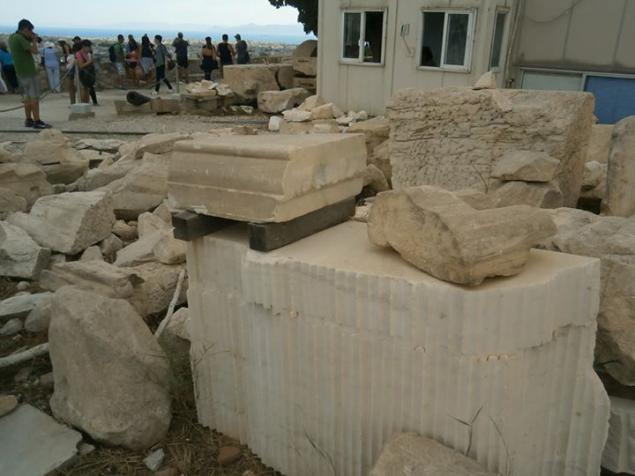
Old and new stones. The sample on the upper stone cutter?
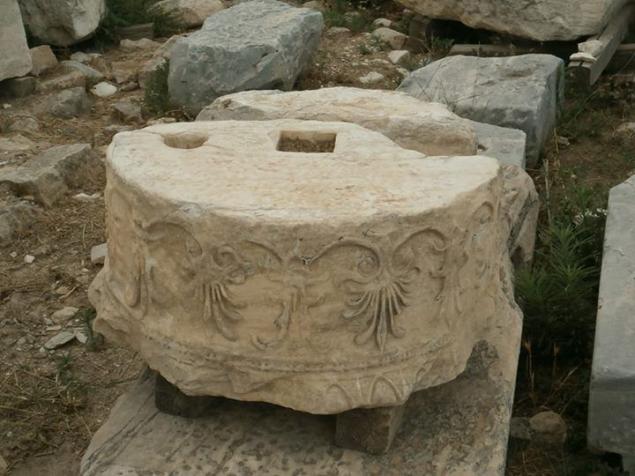
A square groove in the center and a circular side. To avoid confusion in the assembly? I really wanted to try on a tape sizes of ornaments on the column, as far as they coincide. The guard went after and drove away from the rocks.

To lull the vigilance of protection:-)
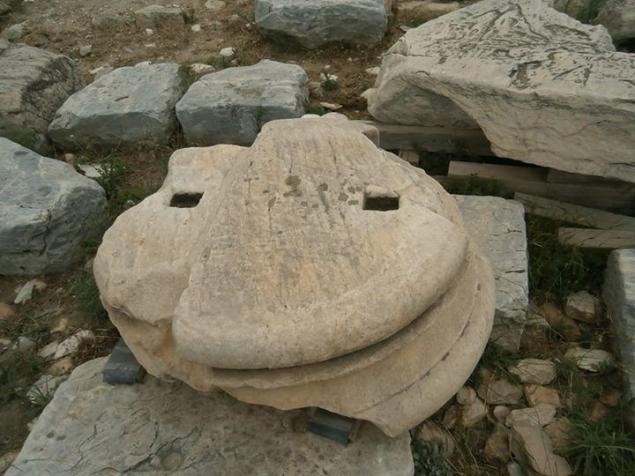

The upper portion of the column.
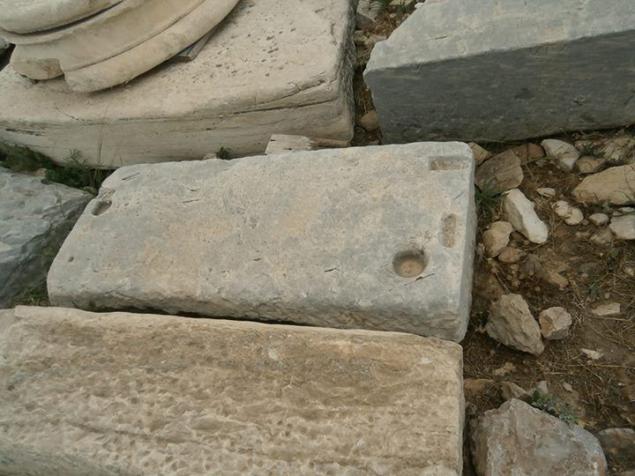
This unit is just in the wrong place will not work.
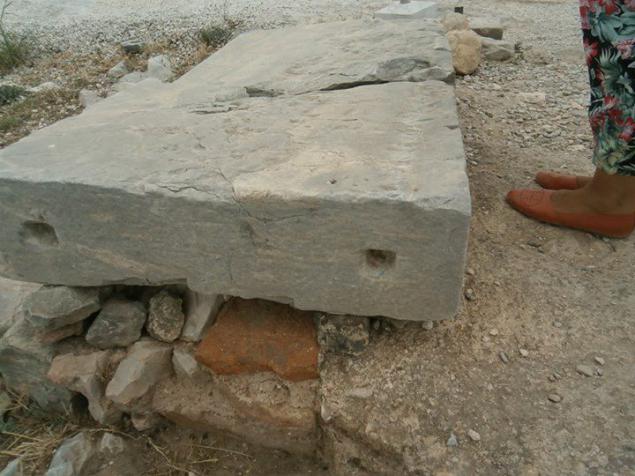
How accurately is necessary to manually handle plate for docking these slots?

Protruding spikes on the wall blocks.

Square hole of the beam? What sawed logs? Is not it easier to make a round hole in a stone and grind the wooden beam? Ancient builders believed differently.
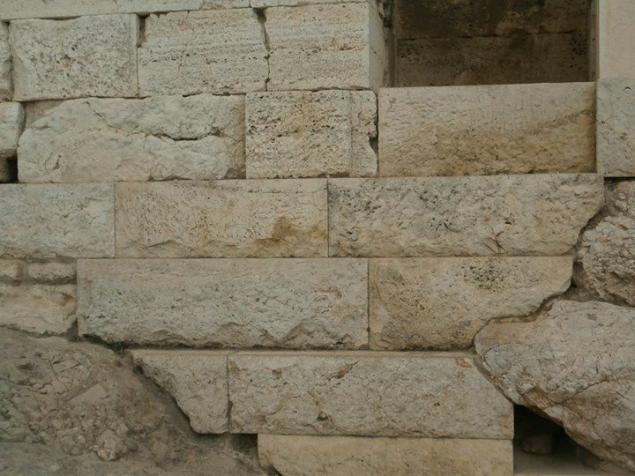
Precision fit wall blocks.
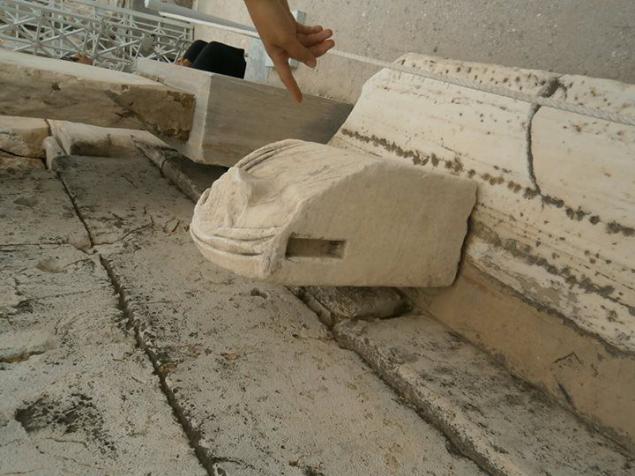
Wall blocks. They also spiked connected?

As the ancient Greeks built the Parthenon? Internet search led to a very interesting suggestion:
"The study of famous architectural structures: Pyramids, the Baalbeck temple, the Colosseum, the Pantheon, the Parthenon ... we come to some surprising conclusions:
The official history of the ancient world - is "anthill under the tank" ©.
The greatness of ancient civilizations turned greatness extraterrestrial expeditions ... © »
--img28--
"The Parthenon (ancient Greek. Παρθενών - maiden; clean) - a monument of ancient architecture, ancient Greek temple, located on the Athenian Acropolis, the main temple in ancient Athens, dedicated to the patroness of the city and the whole of Attica, Athena-Virgin (Ἀθηνᾶ Παρθένος). Built in the years 447-438 BC. e. Project architect Callicrates Iktinos and decorated in the years 438-431 BC. e. under the direction of Phidias in the reign of Pericles.
The temple was built entirely of Pentelic marble, produced nearby. During production it is white in color, but under the influence of sunlight yellow. The north side of the building is exposed to less radiation - and because there was a stone-gray ashy hue, while the southern blocks give a golden-yellow color. Tile and stylobate are also made of this marble. Columns of stacked drums, fastened together with wooden plugs and Kingpins.
Masonry was carried out without any mortar or cement, that is was dry. Blocks were right quadra. They carefully grind the edges and adjust the size of each other. The inner part remained roughly treated, which saves time and reduces labor costs. At the bottom lay orthostatic - big quadra, which already has a much smaller stones that make up the regular masonry. Horizontal units are connected by iron scrapie, inserted in the slots and filled with lead. Vertical communication was performed using iron rods.
Overlaps were wooden. Ceilings inside were obviously kassetirovany because it is believed that the exterior - stone - mimic internal ».
After seeing the Parthenon, was wondering how it was built and what technologies were used. Close to the stone guards are not allowed, but some interesting things have been photographed.

Columns are built of massive blocks.

Surprising accuracy of the vertical lines and the sample, the gap between the blocks.

Column block. Absolutely smooth polished surface on which to make a rough chisel notches. The hole in the center of the unit! Why? If cement blocks together and prevents shifting, the rod must be of good alloy steel. Wikipedia is written about wooden plugs and shkvortni:-)

Amazing stone, the ancient "Lego". Marble round pins protrude 5 cm. What is required Rabo hours to create such a structure, and most importantly why. This can be done if it is not technological problems, such as casting or CNC.

More «Lego».


Apparently builders use these slots is not something unique.

Select unturned 4-5 sq. meters of the surface for a few slots easily. I believe that is done manually slaves:-)

Square grooves on the column and the cutouts on the block on the right.

The notch in the foundation blocks. Why so complicated?

Slaves had a lot of free time?


Another element of the column with the hole exactly in the center.
Wow! Square hole. In ancient marble lathe-machining lathe clamping the workpiece? Positioning units relative to one another is not necessary, if only the lower block with a square hole to insert the spike square cross section at the bottom and round at the top and set top box with a circular hole. Another question, "Why" and "How to».

These are the sample on the column allegedly made by hand.

Decorative elements. If cast in stone in the form, then the logical structure, if the stone cut down from the entire surface for the sake of one element, then there are no words.

Old and new stones. The sample on the upper stone cutter?

A square groove in the center and a circular side. To avoid confusion in the assembly? I really wanted to try on a tape sizes of ornaments on the column, as far as they coincide. The guard went after and drove away from the rocks.

To lull the vigilance of protection:-)


The upper portion of the column.

This unit is just in the wrong place will not work.

How accurately is necessary to manually handle plate for docking these slots?

Protruding spikes on the wall blocks.

Square hole of the beam? What sawed logs? Is not it easier to make a round hole in a stone and grind the wooden beam? Ancient builders believed differently.

Precision fit wall blocks.

Wall blocks. They also spiked connected?

As the ancient Greeks built the Parthenon? Internet search led to a very interesting suggestion:
"The study of famous architectural structures: Pyramids, the Baalbeck temple, the Colosseum, the Pantheon, the Parthenon ... we come to some surprising conclusions:
The official history of the ancient world - is "anthill under the tank" ©.
The greatness of ancient civilizations turned greatness extraterrestrial expeditions ... © »
--img28--





















